A joint proposal by the African Development Bank and SAA has been approved by the PHRDG program under the support of the Government of Japan
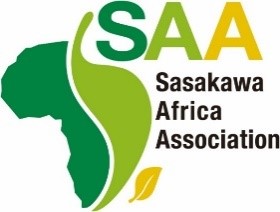
August 26, 2022
African Development Bank
Sasakawa Africa Association
Commitment to improve smallholder farmers’ livelihood while addressing climate change in Africa
A joint proposal by the African Development Bank and Sasakawa Africa Association has been approved by the Japan Policy and Human Resources Development Grant (PHRDG) program under the support of the Government of Japan.
On August 23rd, 2022, the Government of Japan (the Ministry of Finance) approved the project called "Evidence-based Regenerative Agriculture to Address Climate Change in Africa" (Grant: US$975,000) as project in the Japan Policy and Human Resources Development Grant (PHRDG) program, which is established with the support of the Government of Japan through the African Development Bank. The project will be implemented under the partnership of the African Development Bank and Sasakawa Africa Association. The project aims to improve the livelihoods of smallholder farmers in Ethiopia and Nigeria while addressing climate change by combining cutting-edge technologies, such as AI-powered agricultural tool, with participatory agricultural extension methods, and improved crop varieties.
This project aims to verify and disseminate regenerative agricultural practices that are oriented towards the local agricultural ecosystem (climate, vegetation, and soil) of the target region by using “e-kakashi,” an AI-powered “brain” for agriculture provided by SoftBank Corp., to improve the agricultural productivity of 200,000 target farmers in both countries as well as to mitigate the climate change by reducing the greenhouse gas emissions and increasing carbon sequestration in farmland. The target crops are assumed to be maize and wheat in Ethiopia and maize and rice in Nigeria.
Many smallholder farmers in African countries, including Ethiopia and Nigeria, depend on rainwater for their agricultural needs and are therefore strongly affected by climate change, including drought, high temperatures, and changes in precipitation patterns. Under these circumstances, regenerative agriculture is attracting attention as a means to sustainably increase farmland productivity by maintaining and restoring soil health (physical and chemical property, and biodiversity) through minimum tillage and mulching (soil covering).
For example, the biodiversity of soil organisms and microorganisms in soil helps form the aggregate structure, which increases the soil's water and fertilizer retention capacity, and microorganisms facilitate the absorption of micronutrients necessary for the plants’ growth, thereby increasing crop productivity and enhancing the adaptation and resilience to climate change. In addition, the project expects to contribute to climate change mitigation by reducing greenhouse gas (GHG) emissions through the combination of enhanced agricultural practices, such as the optimized fertilizer application, which reduces the emission of nitrous oxide (with a global warming potential 298 times that of carbon dioxide), the alternate wetting and drying (AWD) of rice paddy fields, which reduces the methane emissions (25 times), and the carbon sequestration by non-disturbance of soil organic matter.
Considering such regenerative agriculture practices and effects, this project will verify and disseminate cultivation technologies best suited to the target regions based on the results of data collection and analysis of the environmental conditions and crop growth using e-kakashi, and identify their mitigation and adaptation effects against climate change based on scientific evidence. Specifically, the project aims to improve crop productivity (yield) and input efficiency (especially water and fertilizers), while reducing methane emissions from rice paddies and nitrous oxide emissions from field lands, and increasing carbon sequestration in farmland. In addition, the project will introduce nutrient-fortified climate-resilient crop varieties of rice, maize, and wheat, developed by the African Development Bank's Technologies for African Agricultural Transformation (TAAT) program, which has heat-, drought-, and disease-tolerance, to further increase the resilience of small-scale farmers to climate change and contribute to nutrition improvement for farmers and consumers.
This is the first time that a project proposal submitted by a Japanese NGO has been approved under the PHRDG program. The African Development Bank and Sasakawa Africa Association will continue to deepen their collaboration to develop projects aimed at establishing strong and sustainable food systems in Africa.
*The African Development Bank Technologies for African Agricultural Transformation (TAAT) program
The Africa Development Bank is committed to transforming African agriculture into a competitive and inclusive agribusiness sector, which generates wealth, improves livelihoods, and safeguards the environment. In pursuit of this vision, the Board of Directors of the African Development Bank established the Technologies for African Agricultural Transformation (TAAT), which is mandated to boost agricultural productivity across the continent by rapidly delivering proven technologies to millions of farmers. TAAT aims to double crop, livestock, and fish productivity by expanding access to productivity-increasing technologies to more than 40 million smallholder farmers across Africa by 2025. TAAT seeks to generate an additional 120 million metric tons of food while lifting 130 million people out of poverty. TAAT partners with the Consultative Group on International Agricultural Research (CGIAR) Centres and Advanced Agricultural Research Institutes to access proven technologies and works in consortium with National Agricultural Research and Extension Systems (NARES), Ministries of Agriculture, NGOs, the private sector and farmer organizations to disseminate technologies to farmers. During Phase 1 (2018-2021) TAAT has deployed proven technologies in 27 countries in Africa and this will be expanded to 37 countries during Phase 2 (2022-2025). Among the proven technologies TAAT deploys are high-yielding, nutrient-dense and climate-adapted crop varieties and breeds; and suites of climate adaption and mitigation technologies that contribute to Regenerative Agriculture. TAAT’s technologies provide solutions to value chains of maize, rice, wheat, sorghum and millet, high iron beans, soybean, cassava, orange flesh sweet potato, aquaculture and livestock. TAAT’s technologies also target agribusinesses and emphasize gender and youth, thereby contributing to inclusive and sustainable food systems. For more about AfDB’s TAAT program, please click here.
*Sasakawa Africa Association
Sasakawa Africa Association (headquarter: Tokyo, Japan) was founded in 1986 by former U.S. President Jimmy Carter, the late Dr. Norman Borlaug, Nobel Peace Prize laureate as the father of the Green Revolution, and the late Ryoichi Sasakawa, former president of the Nippon Foundation, in response to a famine in the Horn of Africa in the 1980s. Since then, it has developed agricultural extension programs in a total of 16 countries, and currently works in Ethiopia, Mali, Nigeria, and Uganda on agricultural extension activities for smallholder farmers and capacity building for agricultural extension workers with a team of 170 members. Initially, activities focused on improving crop (grain) productivity, but since the 2000s, the scope of activities has expanded to include the entire value chain, including post-harvest management, agro-processing, and agribusiness entrepreneurship. The new five-year strategy (2021-2025), adopted in 2021, promotes the three-pillars of regenerative agriculture, nutrition-sensitive agriculture, and market-oriented agriculture, with the goal of realizing a resilient and sustainable food systems in Africa.
For more about Sasakawa Africa Association, please click here.
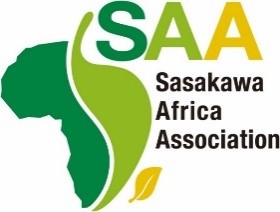
*Regenerative agriculture
Sasakawa Africa Association defines "Regenerative Agriculture" as agriculture that makes farm more fertile and productive through the restoration of soil health (physical and chemical properties, and biodiversity), thereby enabling sustainable livelihoods for farmers. It adopts "conservation agriculture" and "integrated soil fertility management" as specific approaches (agricultural methods). Conservation Agriculture is an agricultural method that aims to reduce environmental impacts, mainly soil conservation, by (1) minimizing soil disturbance by tillage (minimum tillage), (2) covering the soil with cover crops or crop residues (mulching), and (3) crop rotation and intercropping (crop diversification). On the other hand, Integrated Soil Fertility Management is a comprehensive farmland management method that combines (1) improved varieties, (2) inorganic/organic fertilizers, (3) pesticides/biological pest control, and (4) farmers' knowledge. It is not intended to apply these principles uniformly, but to combine them flexibly in accordance with the agro-ecosystem (climate, vegetation, and soil), socioeconomic conditions, and cropping systems of the target region.
SAA Publications
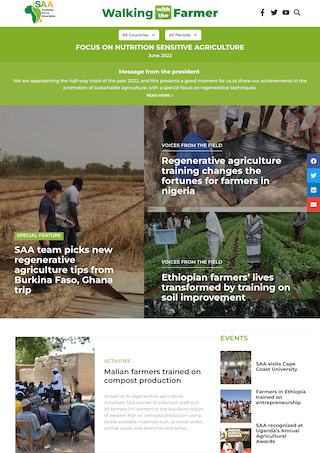
E-newsletter
"Walking with the Farmer"
SAA publishes a bimonthly e-newsletter reporting on SAA activities.
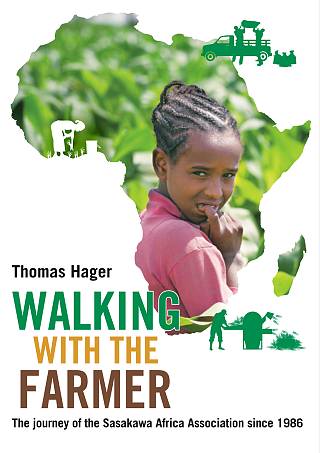
SAA history book
"Walking with the Farmer: The journey of the Sasakawa Africa Assoication since 1986"
This book chronicles the history of SAA from its inception to the present.
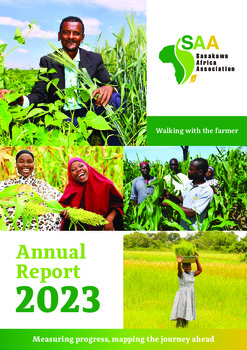
Annual Report
Annual Report FY2023
Annual Report FY2023 is available here.




